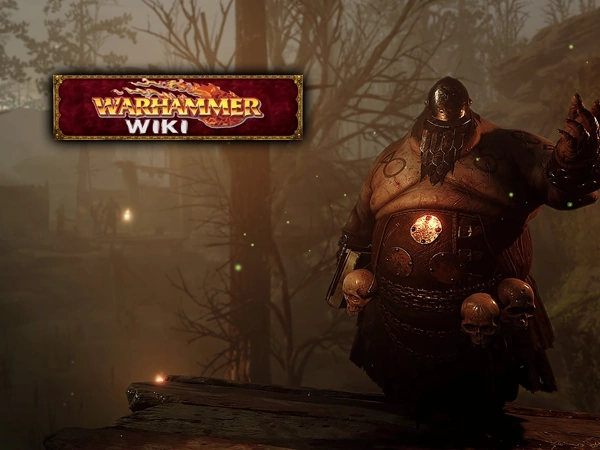I'm hoping someone can help me with something. The
Total War wiki page for the Forest of Gloom has lore in it, but I don't know where that lore comes from. I thought it might've been some in-game description, but I've booted up the game and can't find any description. If anyone knows the source of that lore or knows how to bring up province/settlement descriptions, I'd much appreciate it.
From this, I'm interpreting that Total War is unscrupulous in its use of the term 'Dark Magic', and that therefore Ostankya doesn't necessarily use Dhar.
WFRP 4e: Altdorf - Crown of the Empire, page 213
Dalaethra Bladeborn is a Witch Elf currently disguised as a High Elf merchant in Asurstrasse. She runs a small network of terrified and infatuated human agents.
Seems witch elves can do more than killing, they can also be spies.
Dwarfs 6e page 22, Engineering Runes
RUNE OF FORTUNE
Discovered by Magnus Hammerson, who broke Runesmith tradition by selling it to the Engineers Guild.
Spicy.
The
wiki page on Khazalid cites WFRP 3e: Book of Grudges as saying that "ang" means ironwork or industrial work, but it does not. It also cites Book of Grudges as saying that "angaz" means ironwork or industrial work, but it only gives it the definition of ironwork. However, it does correctly cite WFRP 1e: Dwarfs - Stone and Steel as saying that ang and angaz means ironwork or industrial work.
Another thing I've found in Stone and Steel page 101 is that it gives the exact definition of "Azril" as "Silvery colour". The wiki page cites Grudgelore for the word's definition, which turns out to be extrapolation from a translation of Vala-Azrilungol [sic] instead of using its actual Khazalid glossary:
Numerous earthquakes ravage Vala-Azrilungol100.
100. Literally meaning 'Queen of the Silver Depths'.
So a more literal translation of Vala-Azril-Ungol is 'Queen of the Silver-Coloured Depths'.
The dwarves seem to have two words for darkness: dharkh and dum. Page 101 says Dharkhangron means 'Dark beneath the world (underground' and page 102 says Dum means 'Doom or darkness; Chaos'. I think the latter is a metaphorical darkness, while the former is more literal.
Page 102 gives a translation of Gorak as 'Great cunning, uncanny, magical'. I'm wondering if that has something to do with Gor-Dum. (btw 'Gor' means 'Wild beast, beastmen'.)
Page 103 says that that Khazalid for runesmith is rhunki, which is odd since you'd think it'd be rhunokri. Okri is defined here, by the way, it's not some later word.
Page 103 also says izril means jewels, so '-ril' means more than just metal. Page 104 puts a definitive answer to the meaning of '-ril' and makes me deeply empathise with that one dwarf in Empire in Ruins who authored
Catalogues of Confusion and Shoddiness: An Investigation of Manling Efforts in Scholarship with regards to the incomplete work of the wiki editor. They give the definition of Ril as 'Gold ore that shines brightly in rock, can also mean new gold, recently minted' and cites two sources: Book of Grudges, which matches it, and Grudgelore, which gives that definition specifically in a section about gold and the various words dwarves use to define it. Stone and Steel has more definitions for Ril: 'Gold ore which shines brightly in rock, shiny, polished, edged'. So '-ril' can just mean shiny.
However, I'm not sure what 'iz-' means. Izor means copper.
Troll means Troll. The word trogg instead means 'A feast or heavy drinking bout', and I'm wondering if that's got something to do with Age of Sigmar's troggoths.
Page 106 says wand means magical rune staff.
Zan means 'The colour red, blood'. Zanguinius.






